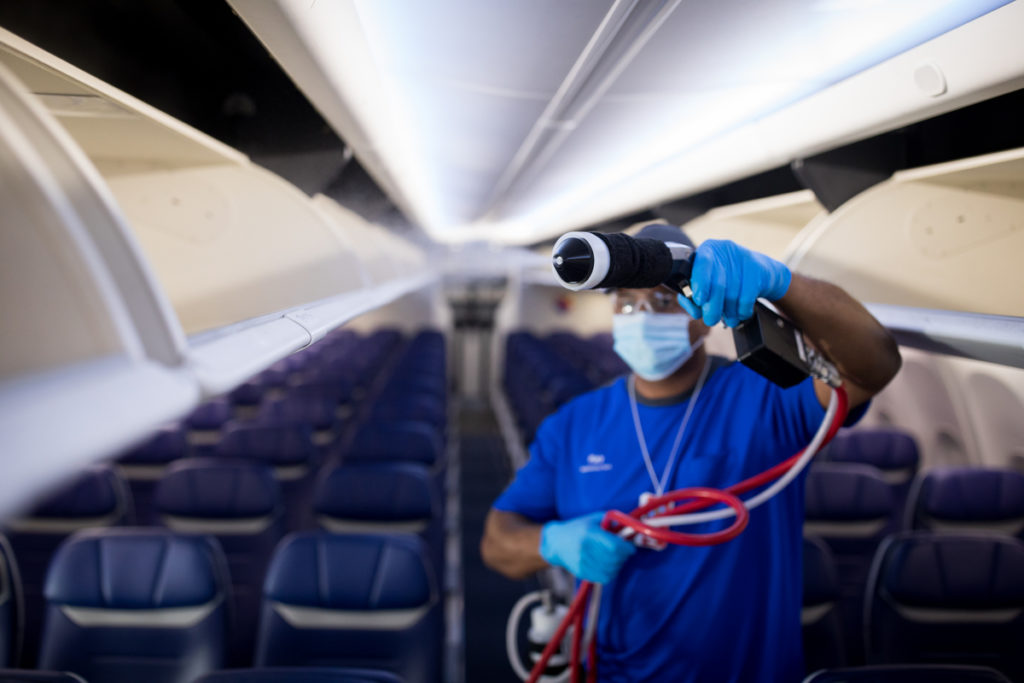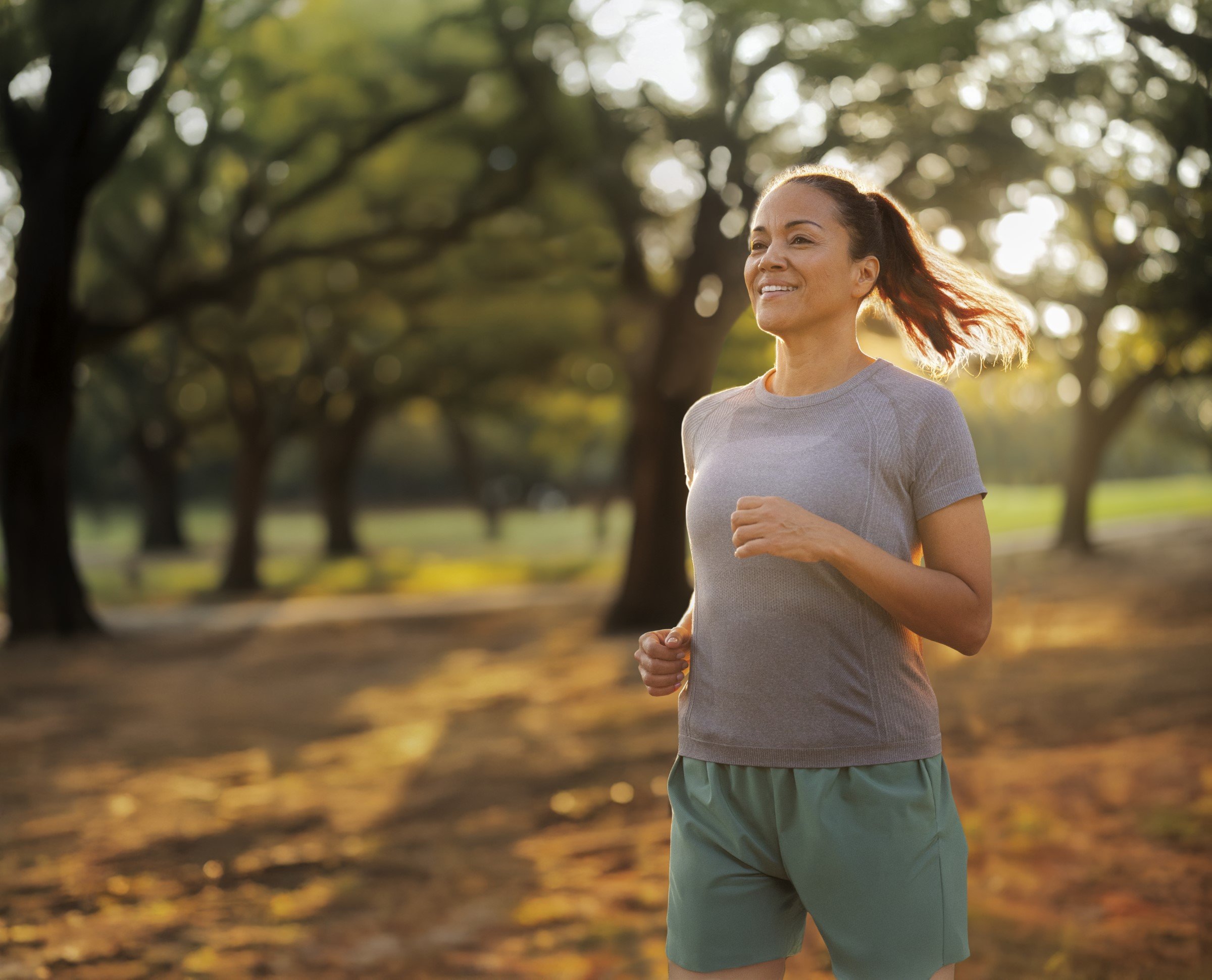Coronavirus Flying Lessons — Everything You Need to Know (and Do) to Make Yourself as Safe as Possible
Getting on a Plane — Which Airline is Best?
BY Kimber Westphall Clonts // 07.21.20
Southwest Airlines implements a new cleaning process during the Coronavirus outbreak
Co-existing with a global pandemic is the new normal. While it wasn’t on the agenda for our summer plans, the coronavirus is here. And doesn’t appear to be exiting any time in the near future. Everyone is adapting and maneuvering lives around in different ways: what’s best for their families, health and lifestyle.
Some of these choices involve whether or not to move forward with summer travel plans, and hop on a plane. Regardless of the choice, restrictions are required and enforced. We’ve spoken with some local experts to uncover what safety measures are new and what trends aviation personnel are seeing during this time of transition in travel.

Perhaps the biggest and most important question mark lingering out there: Is it safe to fly? While airline advocates may attempt to claim flying is safer than it was earlier in the COVID-19 pandemic because of airlines’ implemented cleaning changes and safety restrictions, travelers must still take precautions. And it’s important to review these ever-changing rules and regulations to mitigate the risk of exposure to potential germs. Or the risk of showing up for a flight unprepared.
With two big airline hubs in D-FW and another in Houston, Texans are no strangers to crowded airports and waiting in terminals for a summer jaunt. We caught up with Southwest Airlines spokesperson Dan Landson to better understand safety trends to look out for when traveling.
Airline Coronavirus Restrictions
“As we learned more about the virus and with guidance from local and federal health authorities, we built a robust program known as the Southwest Promise,” Landson says. “It’s a multi-layered approach to the wellbeing and comfort of our customers and employees.”

He says the new protocol includes enhanced cleaning procedures that include the use of electrostatic anti-microbial sprayers for all surfaces onboard, more frequent cleaning of aircraft cabin spaces and high-touch airport surfaces. Southwest also requires face masks or facial coverings for customers and employees. And they are one of the airlines capping the number of seats sold on every flight to leave the middle seat open through at least the end of September.
Familiarizing oneself with protocols like this is key when seeking peace of mind, and determining which airline will be the best fit for your health and travel needs.
For instance, American Airlines has created a new Travel Health Advisory Panel, which includes Vanderbilt University Medical Center officials to advise on health and cleaning matters as travelers return to the skies this summer. American is also notifying customers if the flight is looking crowded, and then allowing those passengers to move to a more open flight without incurring additional costs.
Delta has initiated a new back-to-front boarding process in an attempt to ensure social distancing between passengers. All the precautions and procedures are laid out clearly on the respective carriers’ websites. And the airlines are communicating these fluid, and ever-evolving updates with passengers, similarly to how they would communicate flight status updates. Beyond what the airlines are implementing, the passenger has the ability to control safety variables as well.
“Our number one asset that we have is our people,” Landson says. “We can’t be more proud of the work they are doing every day to restore confidence, and staying on the forefront of safety and technology, and ultimately making sure we’re ready to welcome travelers back when they’re ready to fly again.”
Things to Control During your Air Travel
From arriving at the airport, to hopping on the plane, there are precautions that can be taken to avoid the risk of germ exposure. Simple changes like ensuring hand sanitizer is easily accessible to which seat is chosen on the flight can increase safety among air travel.
Here are some easy tips to follow:
Avoid bins at TSA checkpoints
Although it’s a common and mindless routine to pop all carry-on items into the TSA-sanctioned bins, travel light through security and avoid the need to place items in bins unnecessarily. And in an effort to increase social distancing among passengers and agents, the TSA implemented a process where passengers scan their own boarding passes.
Bring Hand Sanitizer & Antibacterial Wipes
This may sound like a no-brainer as hand sanitizer has become such a staple since the spring. But make sure the supply is stocked and wipes are in tow. Fortunately, the TSA relaxed its liquid rule as it pertains to hand sanitizing agents. Passengers are allowed to have containers up to 12 ounces of hand sanitzer, instead of the typical 3.4-ounce rule for carry-ons.
With the antibacterial wipes, use them on surfaces such as seats, tray table, armrests and any other surfaces that could be touch points on the plane or in the terminal. And of course when avoidable, eliminate using the bathroom aboard a flight. But of course if it’s necessary, use the same rules of thumb with sanitation wipes in wiping down the door handle and other surfaces inside the lavatory.
Skip Airport Food
Consider minimizing time in airport stores or restaurants. Bringing food from home can help avoid exposure to high traffic touch points within an airport. Additionally, many in-flight food and beverage services are limited to reduce interaction between flight attendants and passengers, so in-flight offerings will be minimal.
Which Seat is Best
Many middle seats on various airlines are not available. So that narrows it down to the aisle or window seat. Opt for the window, as this reduces the number of people sitting close by and it puts you further from people walking through in the aisle. The thought may occur as to whether or not it’s best to open the overhead air vents.
Most airborne viruses and other germs do not commonly spread easily aboard a flight according to airline officials, based on how airplanes circulate and filter the cabin air. And the majority of planes have filters that remove 99.9 percent of particles from the air while bringing in outside air.
So keep those vents open to improve ventilation. And it goes without saying nowadays, a mask is required during in-flight, so be sure it’s a clean, secure mask that can withstand the duration of the flight while keeping you as comfortable as possible.
Safe flying.















_md.jpeg)

_md.jpeg)





_md.jpeg)